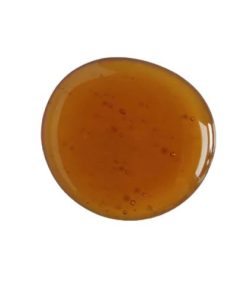What is Crystal Resistant Distillate
Buy Crystal Resistant Distillate (CRD) refers to a type of cannabis concentrate that has undergone additional processing to remove unwanted impurities such as lipids, waxes, and plant matter. The term “crystal resistant” indicates that the concentrate has a higher resistance to crystallization compared to other forms of cannabis extracts, such as shatter or wax.
To produce CRD, cannabis extractors typically start with a raw cannabis extract, such as CO2 oil or hydrocarbon extract. The extract is then subjected to further refinement processes, including winterization and filtration, to remove any residual fats, lipids, and other impurities. Winterization involves chilling the extract and filtering out the undesirable components, while filtration helps remove any remaining particulates.
The goal of producing CRD is to create a highly pure and potent cannabis concentrate that offers a clean and smooth vaping or dabbing experience. By removing impurities, CRD minimizes the likelihood of harsh or undesirable flavors, and it can also reduce the risk of potential health concerns associated with inhaling certain contaminants.
CRD is often sought after by cannabis enthusiasts who value purity and flavor in their concentrates. It is typically used for dabbing or vaporizing and can be consumed on its own or added to other cannabis products to enhance their potency or flavor.
It’s important to note that the production and availability of specific cannabis products can vary depending on legal regulations and regional market conditions.
Crystal-Resistant Distillate and How It Differs
Buy Crystal-Resistant Distillate (CRD) is a term used to describe a type of cannabis distillate that has been specially processed to minimize or prevent the formation of crystals or solid precipitates. It is commonly used in the context of THC distillate, which is a highly concentrated form of cannabis extract known for its purity and potency.
Regularly crystal resistance distillate can sometimes form crystals or solidify over time due to the high concentration of cannabinoids present. This crystallization can affect the texture, consistency, and user experience when using the product. CRD, on the other hand, is formulated to resist crystallization and maintain a more stable, liquid consistency.
The process of producing CRD involves additional refinement techniques to remove impurities and optimize the molecular structure of the distillate. These additional steps may include fractional distillation, winterization, filtration, or other proprietary methods employed by the manufacturer. The goal is to create a more uniform and stable product that remains in a liquid form, making it easier to handle, dose, and consume.
By minimizing crystallization, CRD offers several benefits. It preserves the original liquid consistency, allowing for easy use in various applications such as vaping, dabbing, or infusing into edibles. CRD also tends to have improved flavor and aroma compared to crystallized forms, as the crystals can sometimes trap certain compounds that contribute to the overall sensory experience.
It’s important to note that the specific techniques and formulations used to create CRD can vary between manufacturers and brands. Additionally, the availability of CRD may vary depending on regional regulations and market demand. If you are considering using or purchasing CRD, it is advisable to research and choose reputable brands or consult with local dispensaries for more information on available products in your area.


